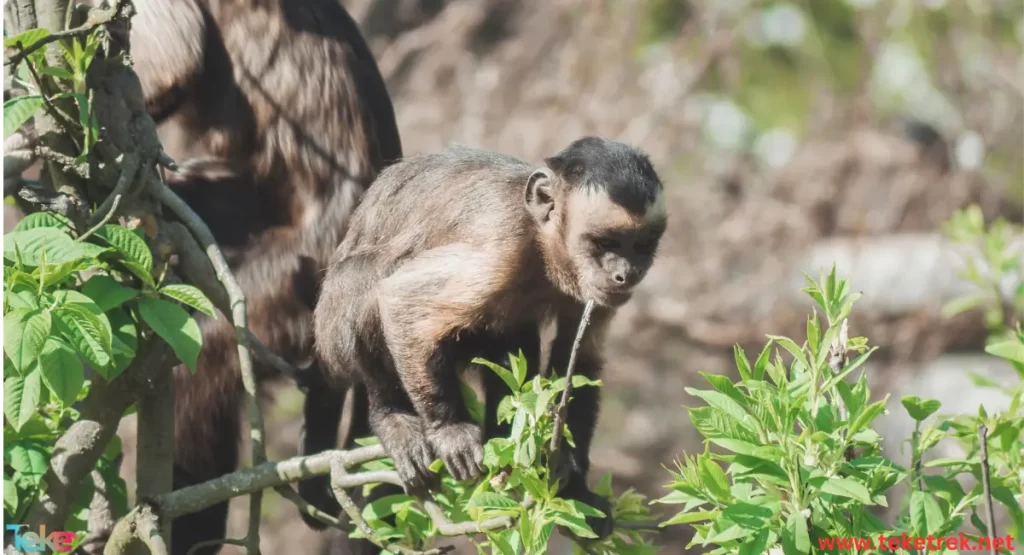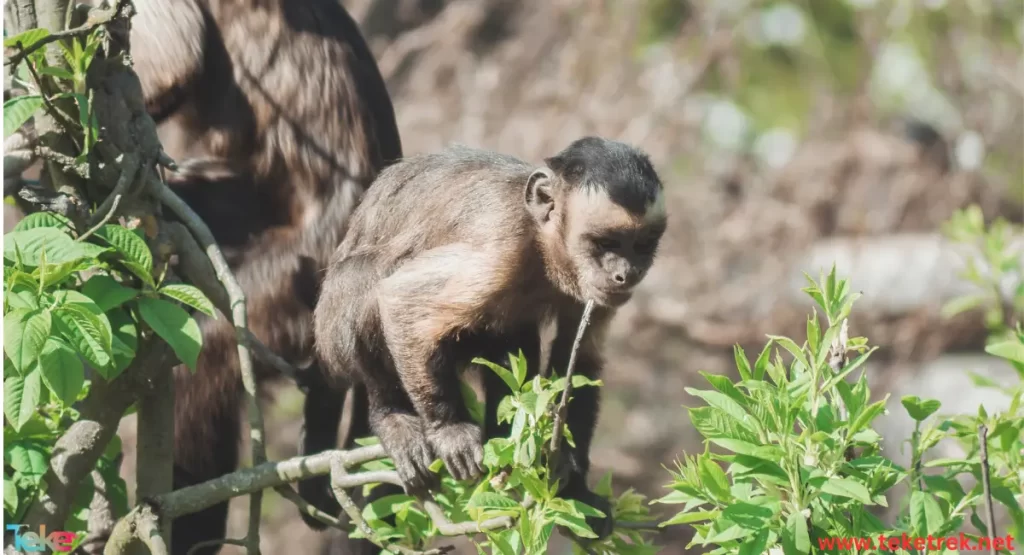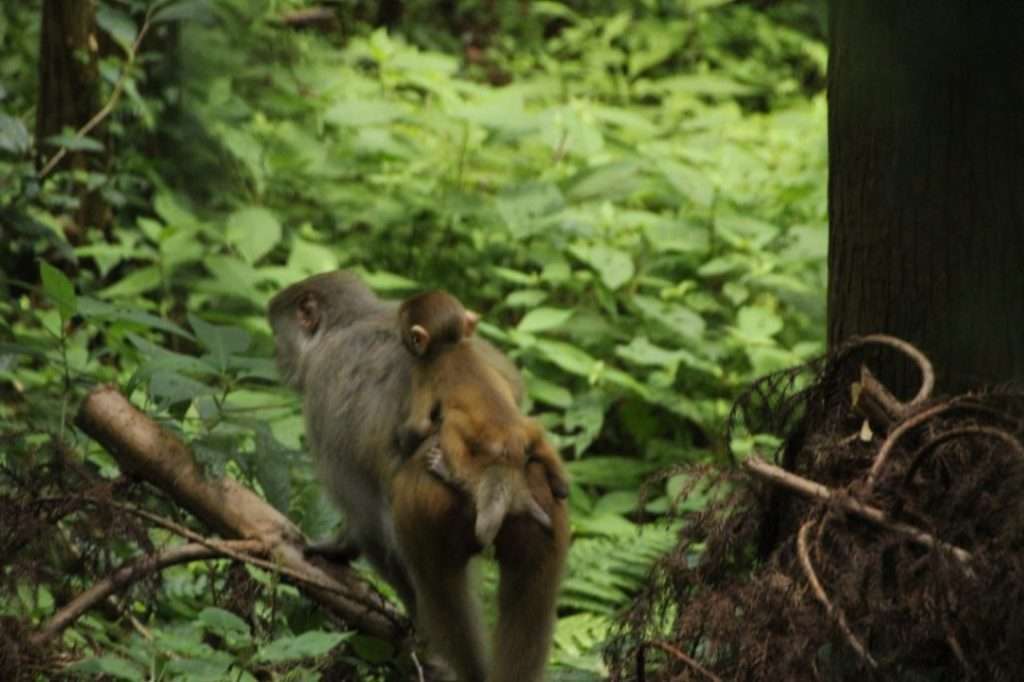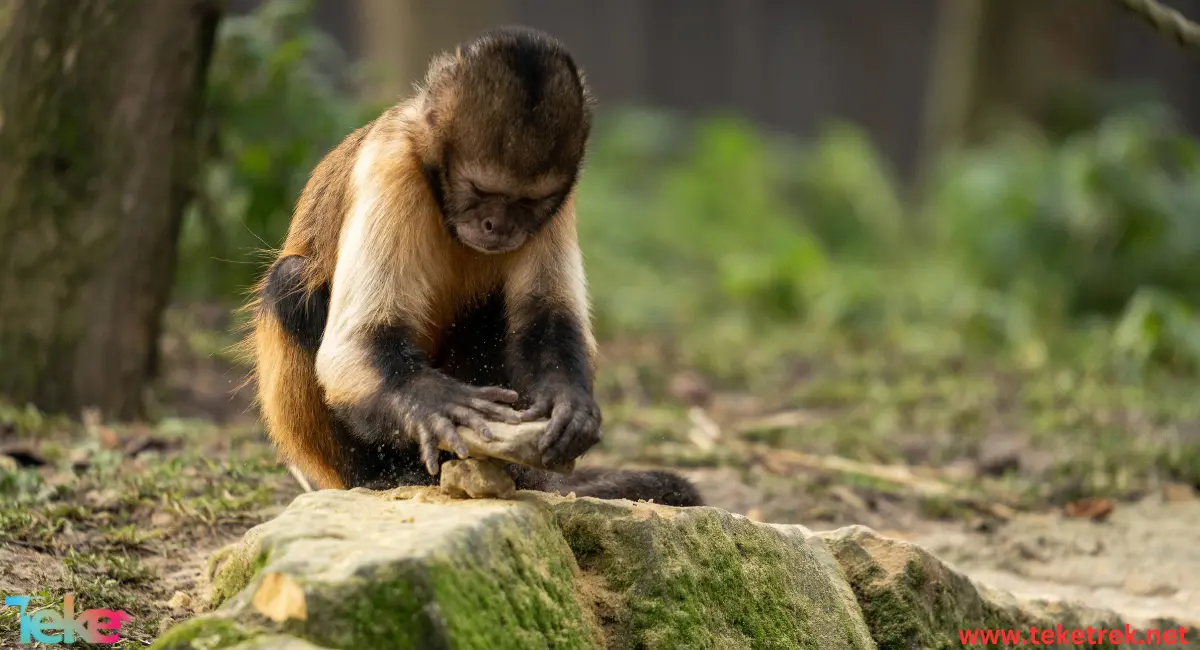The monkey is considered a unique creature that evokes wonder and admiration, with many species and remarkable intelligence that has captured the interest of scientists for decades. While some may view them as bothersome animals, they are among the few creatures that can express love and affection towards the individuals who care for them.
In this article in TekeTrek Website, we will introduce you to the most important information related to this object. Follow along with us.
What does the monkey mean?
- The monkey is one of the small, lively, and intelligent mammals, belonging to the primate family with a tail. Scientific Name: Hominoidea.
- It is characterized by a narrow chest skeletal structure, with a short and flat face.
- Monkeys live all over the world in various shapes, sizes, and colors.
- Monkeys distinguish themselves from other animals by their ability to sit upright like humans.
- They have five fingers with claws, except for the big toe. Monkeys cannot walk using their feet only; they use their hands as well.
- Incapable of standing for long periods using their legs.
- Monkeys are found in most parts of the world, including rainforests, deserts, and mountains. The majority are found in tropical forests in Asia, Central and South America, or in savannas in Africa.
- There are more than 260 species of monkeys divided into New World and Old World monkeys.
- New World monkeys live in North and South America, while Old World monkeys live in Asia and Africa.
- The life cycle of monkeys starts with childhood, passes through adolescence and maturity until reaching old age, and they can live up to 40 years.

Facts and characteristics about Monkeys
- The Monkey excel in intelligence, surpassing many other animals; they are quick to understand and learn.
- A monkey’s smile, lip smacking, yawning, and head and shoulder swaying are signs of their aggression.
- Modern monkeys have 36 teeth, while ancient monkeys have 32 teeth.
- Some species, like chimpanzees and gorillas, have facial features similar to humans.
- Monkeys are active during the day, except for some species known as nocturnal monkeys or night monkeys.
- Monkeys communicate with each other through body language and vocalizations, including screams and barks that can be heard up to 5 kilometers away.
- Monkeys use covert calls as a means of communication, where one monkey starts making a sound, and others in the group join to warn about imminent danger.
- Infanticide is quite common among mammals, and it’s said that spider monkeys kill only male offspring.
Monkey Diet
- Monkeys may spend a long time searching for their food.
- Most people believe that monkeys eat bananas for food, but this is a misconception.
- Wild monkeys may eat bananas, but it is considered undesirable for them due to dental problems, obesity, and diabetes it may cause.
- Monkeys rely on both plants and meat for their diet.
- They primarily feed on fruits, seeds, flowers, and some types of nuts.
- They also consume bird eggs and some creatures like lizards, spiders, and insects.
Reproduction in Monkeys
- There is no specific time for monkeys to mate; it depends on the availability of shelter and food.
- If food and shelter are scarce, monkeys cease mating.
- A female monkey gives birth after a gestation period of 160 days.
- She typically gives birth to one offspring every two years.
- The baby monkey relies on breastfeeding from the mother as its primary source of food.
Why do monkeys resemble humans?
- Humans and monkeys belong to the same biological family, which is the hominoid family, giving them a high degree of genetic similarity, anatomical structure, and physiological functions.
- There are many physical similarities with humans, such as muscles, organs, the central nervous system, and the skeletal structure.
- Monkeys establish social relationships within their groups like humans.
- Monkeys possess abilities for learning, intelligence, tool usage, problem-solving, and linguistic communication in various ways.
Benefits of Monkeys to the Environment
- Monkeys play a role in maintaining ecological balance by contributing to the dispersal of plant seeds and trees when they consume fruits and transport them between different areas.
- Monkeys consume insects that cause damage to agricultural crops, thereby reducing the need for chemical pesticides.
- Monkeys are used in scientific research, and studying them contributes to understanding cardiovascular diseases, human evolution, and the development of treatments and vaccines.
Monkey types
- Chimpanzee: Considered closest to humans in terms of similarity and found in Africa.
- Gorilla: The largest living primates, characterized by a massive body and great physical strength. There are three species: Western gorilla, Eastern gorilla, and mountain gorilla.
- Macaques: Some of the most dangerous monkeys to humans, as a bite from them can be fatal due to carrying the deadly “Herpes B” virus.
- Orangutan, also known as the “man of the forest”: Resembles humans in behavior and features, with long hair and arms. It is one of the oldest primates on Earth and lives in Southeast Asia, primarily consuming ripe fruits and obtaining fluids from its diet without needing to drink water.
- Baboon: Found in Africa, known for its powerful body and distinctive face, with the ability to adapt to different environments.
- Spider Monkey: Several species spread across South and Central America, characterized by their small size, vibrant fur color, and long hair.
- Blue Monkey: A unique species from the Old World monkeys, olive with white and black spots, preferring to live in forested areas for water, food, and shelter.
- Capuchin Monkey: Arboreal, active only during the daytime, and considered one of the most intelligent New World monkeys.
- Squirrel Monkey: Resembles squirrels and lives in groups of up to 300 individuals. It communicates with 26 different vocalizations, and the infant rides on its mother’s back for a full year.
- Golden Lion Tamarin: Recently discovered attractive monkey species, turning golden in color when exposed to sunlight, but endangered due to deforestation and the illegal exotic pet trade.
- Howler Monkey: Named for its loud vocalizations, possessing the loudest call among primates and all animals. They have full color vision like humans but lack the agility of other species.
- Spider Monkey: Brown in color, belonging to the genus Ateles, also known as “spider-like monkeys.” They have long limbs and a prehensile tail, resembling spiders, and travel in small groups by climbing among trees.


FAQ
- Does the monkey eat everything?
No, monkeys primarily feed on fruits, seeds, and plants, and they may also consume insects, eggs, and some small animals.
- What is a monkey’s description?
Characteristics of monkeys include intelligence, tool usage, social communication, problem-solving abilities, and adaptation to different environments.
- Which animal is a monkey?
Yes, the monkey is a type of mammal and is considered an animal.
- Where do monkeys live?
Monkeys live in a variety of habitats around the world, including rainforests, tropical forests, deserts, grasslands, mountains, and urban areas.
- How do monkeys live?
Monkeys live in diverse habitats such as forests, savannas, and mountains, forming social groups called troops. They are diurnal, active during the day, and rest at night. Monkeys adapt to their environment, establishing complex social structures within troops.


In conclusion, the monkey remain beloved creatures to humans, lighthearted and endearing. Some of them possess a captivating appearance with wide colorful eyes, soft fur, and innocent expressions. We must admit that we all adore watching them in zoos and forests for their ability to bring us joy.






